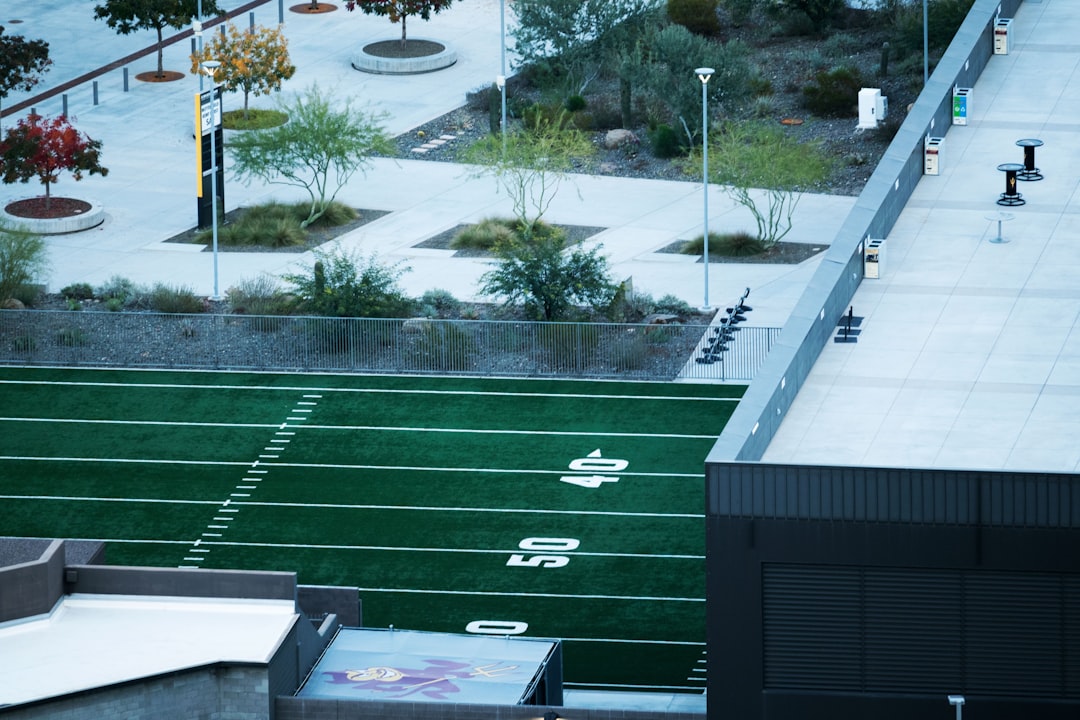This article provides an in-depth look into co-curricular activities, their importance in education, and practical examples. It aims to demystify the often confused terms, co-curricular and extra-curricular activities, and provide an expert exploration of the value these activities bring to the educational experience.
Table of Contents
All about Co-Curricular Activities: A Guide
Key Takeaways
- Co-curricular activities are an integral part of the education system, designed to complement and enhance the learning experience. They are different from extra-curricular activities as they are directly related to the curriculum.
- Co-curricular activities play a significant role in modern education, offering various benefits such as boosting confidence, improving social skills, fostering teamwork, and promoting a healthier lifestyle.
- The terms co-curricular and extra-curricular are often used interchangeably but they are different. While co-curricular activities are directly linked to the academic curriculum, extra-curricular activities are not and are usually pursued outside of school hours.
- Examples of co-curricular activities in schools include debate clubs, science clubs, math competitions, music and drama performances, and more. These activities provide practical, hands-on experience for students, complementing their academic learning.
- There is a wide range of co-curricular activities available, each with its own objectives and role in enhancing student development. These activities are designed to help students develop a range of skills including leadership, problem-solving, creativity, and teamwork.
Co-curricular activities, you might have heard of them, right? Well, in case you’re wondering, let’s clear up the air. These activities are the ones that complement our academic curriculum. When you think about it, you might picture sports, drama, music, debate, etc. But it’s much more than that. The purpose of co-curricular activities is to give better practical knowledge and understanding of educational theories. It’s about developing a holistic approach towards education.
Now, why should you care? The importance of co-curricular activities is immense. It’s not just about fun, although that’s a part of it. It’s about shaping your personality, developing social skills, and boosting mental health. All while contributing to your academic performance! Fascinating, isn’t it?
Wait till we delve deeper into this topic. We’ve got a whole lot of information packed in this article. So, buckle up and get ready for an enlightening journey. After all, who knew there was so much to learn about co-curricular activities, right? Let’s dive right in and get to the nitty-gritty!
Why are Co-Curricular Activities Important?
So, you might be wondering, “why are these co-curricular activities even crucial?” Well, let me tell you, they play, like, a big role in shaping the personality and overall development of students. You see, learning from textbooks is, um, important, but participating in co-curricular activities is equally important, you know.
These activities help students to learn essential life skills like teamwork, time management, leadership, and problem-solving. Moreover, they help to build self-confidence, self-esteem, and a sense of responsibility. They also provide an opportunity for students to express themselves, explore their passions, and develop new interests.
Imagine, a student who is, say, a good debater will learn how to speak in public. And believe me, that’s a skill that can really come in handy later in life! So, in a nutshell, co-curricular activities are, like, really important for students, ok?
The Difference Between Co-curricular and Extra-curricular Activities
Now, let’s get this straight. What’s the difference between co-curricular and extra-curricular activities? Well, it’s pretty simple, really. Co-curricular activities are those that complement and enhance the academic curriculum. They’re part of the school program, so they’re usually conducted in school. These activities can include clubs, sports, and other groups that help students develop skills outside of the classroom.
On the other hand, extra-curricular activities are, well, extra. They’re not tied directly to the academic curriculum. These could be things like community service, internships, and other activities that are done outside of school hours.
So, you see, there’s a clear line between the two. Co-curricular activities are more aligned with the educational goals of the school. They’re designed to augment and enrich the academic experience. Extra-curricular activities, on the other hand, are more about personal growth and development. They allow students to explore interests outside of the school curriculum.
That being said, both types of activities are crucial for the holistic development of students. They help in developing social skills, leadership qualities, and other life skills. So, whether it’s co-curricular or extra-curricular, participation in these activities can lead to a well-rounded education.
Exploring the Diverse Types of Co-Curricular Activities
Every school, you know, has a unique offering when it comes to co-curricular activities. It can be quite a fun journey to explore the various types of co-curricular activities available. Now, let’s dive right into it, shall we?
First, we’ve got the arts. This includes activities like drama, music, dance, and visual arts. Students can express their creativity and learn new skills in, you know, a nurturing environment. And it’s not just about talent; it’s about enjoying the process of creating something beautiful.
Next, we have sports. These activities can range from team sports like soccer or basketball to individual activities such as swimming and martial arts. Sports develop a sense of discipline and teamwork among students. These activities also promote physical fitness which is, you might agree, a crucial aspect of a child’s holistic development.
“> The arts and sports are just two of the areas where co-curricular activities can play a significant role in student’s lives, providing them with opportunities for physical, emotional, and intellectual growth.
-Anonymous Education Expert.
Then there are clubs and societies. These are groups formed around a shared interest, such as a science club or a debating society. Students can deepen their knowledge in their area of interest, learn to work with others, and develop leadership skills.
Finally, we have community service. This includes activities like volunteering at a local shelter or organizing a charity fundraiser. Community service teaches students the value of empathy and giving back to society.
So, you see, the world of co-curricular activities is broad and varied. Each activity offers its unique benefits and learning opportunities. So, it’s important to encourage students to participate in co-curricular activities that align with their interests and passions.
Wrapping Up: The Value of Co-Curricular Activities
Alright, let’s wrap things up, shall we? With our journey through the world of co-curricular activities, we’ve learned quite a few things. Co-curricular activities, well, they’re not just some extra stuff to do in school. They hold a significant place in the educational field. These activities, they are essential, you know, for the overall development of the students.
We checked out, didn’t we, the difference between co-curricular and extra-curricular activities. It’s clear as day, isn’t it, that they both play unique roles in shaping a student’s life. But it’s those co-curricular activities that strengthen the theoretical knowledge gained in the classroom.
And, the examples. Those examples of co-curricular activities, they really drove the point home. Whether it’s debating, sports, arts, or academic clubs, each one of them has a role to play in enhancing the skills of a student. The beauty of it is, they make learning feel less like a chore and more like an adventure.
And let’s not forget, the types of co-curricular activities. There’s a wide range of options, isn’t there? Each designed to meet different student interests and abilities. The key takeaway is that these activities provide a platform for students to explore their passions outside of the standard curriculum.
Alright, it’s been quite a trip, hasn’t it? But the journey doesn’t stop here. It’s time to take action. Encourage your school to invest more in co-curricular activities. Advocate for a balanced education system that values both academics and co-curricular activities. Because, in the end, they shape well-rounded individuals ready to face the real world.
FAQ
What Exactly are Co-Curricular Activities?
Co-curricular activities are those activities that complement the traditional academic curriculum in schools. They are designed to enhance students’ learning experience and are usually integrated into the school’s daily schedule. These activities can range from debate clubs, science fairs, to sports competitions, and they provide students with opportunities to develop various skills that may not be covered in the standard curriculum.
Why are Co-Curricular Activities Important?
Co-curricular activities play a crucial role in modern education. They provide a holistic approach to learning by nurturing students’ physical, emotional, social, and cognitive development. Research and expert opinions suggest that these activities can boost academic performance, enhance social skills, foster leadership qualities, and promote better health among students. In essence, co-curricular activities help to create well-rounded individuals who are prepared for the challenges of the future.
Co-Curricular vs. Extra-Curricular: What’s the Difference?
While both co-curricular and extra-curricular activities supplement the formal curriculum, they differ in certain aspects. Co-curricular activities are directly related to the academic curriculum and are designed to enhance the learning experience, while extra-curricular activities are not tied to the academic curriculum. Extra-curricular activities such as clubs, community services, or sporting events are usually pursued outside of school hours and offer students opportunities to explore their interests and passions beyond the classroom.
Examples of Co-Curricular Activities in Schools
Examples of co-curricular activities in schools are numerous and vary from school to school. Some common examples include debate or drama clubs, science fairs, school newspapers, math clubs, choral or band performances, and sports competitions. These activities provide students with an opportunity to apply what they’ve learned in the classroom, develop teamwork and leadership skills, and explore their interests.
Types of Co-Curricular Activities: A Detailed Look
Co-curricular activities can be categorized into various types, each serving different objectives. For instance, cognitive development activities such as math clubs or science fairs aim at enhancing academic skills; physical activities like sports or dance aim at promoting physical fitness; social activities like debate clubs or school newspapers aim at improving communication and leadership skills; and creative activities like drama or music clubs aim at fostering creativity. Each of these activities plays a unique role in promoting a student’s overall development.





















No comments yet.